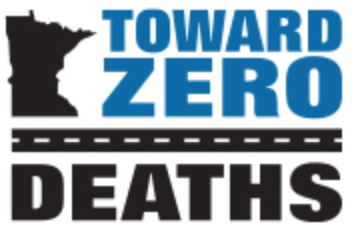
| TIM Home | Know the Law | Training | Dashboard | Focus Areas | News & Resources | Contact |
TIM Key Focus Areas
The TIM program focuses on three key areas: policy, training, and data.
Policy

Policy involves formalizing a commitment to practicing TIM and protecting those who use quick-clearance strategies. Legislation, policies, and procedures create a standard expectation for all agencies responding to crashes. Additionally, quick-clearance legislation empowers authorized representatives to facilitate removing damaged or stalled vehicles and spilled cargo from the right-of-way as a high priority. This changes the conversation from liability to quick clearance.
Clearing lanes quickly improves safety for on-scene responders by reducing their exposure to secondary crashes or struck-by incidents. In addition to improving responder and public safety, quicker clearance improves responder efficiency and decreases the economic and environmental impacts of delayed traffic.
Strengthening the existing Open Roads Agreement with standard operating procedures will result in safer response and quicker clearance among all agency personnel. A safety and quick-clearance culture can be further established when all personnel understand procedures. Extending this agreement to local agencies and medical examiners will result in better collaboration, communication, and coordination.
Training

Training ensures a coordinated response to incidents through a program focused on roles and responsibilities, quick clearance, safety practices, and communication protocols. A training program should include training at all levels— local responders, command staff, and dispatchers—to spread TIM knowledge and gain buy-in on TIM efforts. Designating identified multi-agency staff as trainers will make it easier to control trainer quality, reach high-priority areas, and maintain training data.
The training database documenting trainees and trainers at all levels could be used to strategize and maximize training efforts and other TIM initiatives. Funding may be needed for incentives or innovative training exercises to enhance the training program. Ultimately, training is a justifiable reason to gather responders and share best practices, identify opportunities for improvement, and assign tasks for needed change.
Data

Data is a critical tool for improving Minnesota’s TIM program through innovation, evaluation, and validation. Regular data review and reporting can support integrating other innovative strategies into TIM efforts.
A crash report with required performance measures fields will ensure that all agencies are reporting incident data consistently, resulting in more meaningful insights on TIM practices by time of day, route, and incident type.
Data is also at the core of emerging technologies that are transforming transportation, such as connected vehicles and predictive and adaptive apps. Aggregating and analyzing data involves using “off the shelf” analytics tools combined with custom analytics and dashboards. These analytics tools can enhance After Action Reports with the automation and aggregation of incident data. Crowd-sourced probe data can be used to understand how incidents impact traffic flow and identify alternate routes to better plan integrated corridor management strategies, such as signal timing optimization.
